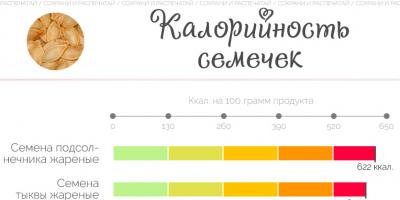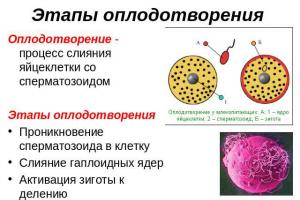Althea has long been famous for its medicinal properties, which are actively used in folk medicine for the treatment of inflammatory diseases of the respiratory tract. But the healing power of the plant does not end there! Read about the beneficial properties and homemade recipes for marshmallow.
Marshmallow medicinal (pharmacy) - Althaea officinalis L.
Malvaceae family - Malvaceae.
Large perennial grayish-green herbaceous plant up to 150 cm high. Rhizome is thick, short, branched; main root woody, lateral fleshy, gray outside, white inside. Stems solitary or numerous, slightly branched. Leaves alternate, petiolate; the upper ones are entire, ovoid, the middle and lower ones without lobes or shallowly three-lobed, crenate along the edge, soft and densely pubescent, especially on the underside.
Flowers 2-3 cm in diameter, on short stalks, sitting in leaf axils; corolla pale pink, white or reddish pink. The fruit is a disk-shaped polysemyanka, which in a mature state breaks up into separate short-pubescent fruitlets. Seeds dark brown, glabrous, smooth, reniform. Flowering from June to September, fruiting in September - October; propagated by seeds.
Marshmallow is common in the steppe and forest-steppe zones of the European part of Russia, in the North Caucasus, in Transcaucasia (mainly in the Araks and Kura valleys), in the steppe zone in the south of Western Siberia, in Kazakhstan. In Central Asia, it occurs in swampy lowlands, among sands in a semi-desert zone, and in mountainous regions it is confined to valleys and gorges. Individual island habitats have been noted in the Vakhsh and Syr Darya valleys, in Turkmenistan, and in the Sevan basin in Transcaucasia.
 Marshmallow flowers
Marshmallow flowers Prefers wet places: banks of rivers, oxbow lakes, ditches, lakes and ponds, coastal thickets of shrubs, damp, mostly saline floodplain meadows and deposits. The main preparations of Althea are carried out in the North Caucasus (Dagestan, Chechen-Ingush and Kabardino-Balkarian Autonomous Republics).
A full-fledged substitute for marshmallow is the Armenian marshmallow (A. armeniaca Tenore), which differs from it in a denser gray-hairy pubescence of the stem and leaves (top and bottom) and more dissected five-lobed middle leaves.
Sometimes inexperienced pickers instead of marshmallow collect the roots of other members of the mallow family: mallow forest (Malva sylvestris L.) and Thuringian hatma (Lavatera thuringiaca L.). From these types of marshmallow officinalis differs:
- The color of the corolla is bright pink in the hatma, pink with dark stripes in the mallow.
- The number of leaves of the subcup: in Althea it is from 8-12 leaves, and in mallow and hatma from 3.
- The shape of the leaves: in the mallow they are heart-shaped, rounded, five-seven-lobed, in the hatma they are angular-five-lobed.
Rules for the preparation of raw materials

The roots of both species are harvested in autumn after the stems have dried or in early spring; in the European part of Russia and in the regions of Siberia in September - early October, in the Caucasus and Central Asia throughout the autumn and spring. Harvesting should be carried out selectively, leaving up to 30% of plants for the restoration of thickets. Subject to the harvesting rules, thickets are restored in 3-4 years.
They dig up the roots with shovels, and in extensive thickets with plows. Then they are freed from the ground, the stems, the capitate parts of the rhizomes and the main taproot, usually woody, are removed, not suitable for use. Non-lignified roots are washed, slightly dried, cut into pieces 30-35 cm long (thick fleshy ones are split lengthwise into 2-4 parts).
 Dried rhizomes of Altea - medicinal raw material
Dried rhizomes of Altea - medicinal raw material To obtain purified raw materials, a gray cork is scraped off the roots with a sharp knife. Immediately after processing, the raw materials are dried, laying out in a loose, not thick layer on nets, stretched panels, plywood sheets, which are placed in the form of racks at intervals of 50-60 cm. Drying is best done with artificial heating in ventilated rooms or special dryers at a temperature of 50- 60 °C. The roots are considered dry if they do not bend when bent, but break with a bang.
There are 4 types of raw materials of wild-growing and cultivated marshmallow officinalis and marshmallow Armenian: whole peeled roots, cut peeled, whole unpeeled and cut unpeeled.
Medicinal properties and recipes
Dried roots and rhizomes of marshmallow and Armenian marshmallow contain up to 35% of plant mucus, 37% of starch, as well as sugar and pectin. The plant is rich in galactose, glucose, arabinose, rhamnose, fatty oils, asparagine, betaine, lecithin, phytosterol. It also contains mineral salts.
The healing properties of marshmallow are due to the presence of starch and mucous substances. The smallest amount of mucus is found in summer, at the beginning of flowering, the largest in October. Althea root preparations are used as an expectorant, anti-inflammatory and analgesic.
Indications for use Althea officinalis
- respiratory diseases (primary indication);
- diarrhea (used as an enema);
- acute gastritis;
- enterocolitis;
- peptic ulcer of the stomach and duodenum;
- angina;
- flu;
- jaundice;
- hemoptysis;
- bladder stones;
- difficult urination;
- whites (in combination with oak bark and grass cuff );
- inflammatory diseases of the eyes (for washings);
- whooping cough and cough of various origins in children (in combination with other drugs).
There is a direct relationship between the amount of hydrochloric acid in the stomach and the viscosity of marshmallow mucus, which increases with increasing acidity of the gastric contents, thereby increasing the protective effect.
Contraindications for use
No pronounced toxic effect on the body was found in Althea preparations. Perhaps the manifestation of individual intolerance in the form of allergic skin reactions, with an overdose - nausea and vomiting. In case of allergy, it is necessary to reduce the dose of the drug, with nausea and vomiting, the stomach is washed and the drug is completely canceled.
Medicine recipes
Decoctions, infusions, syrups, liquid extracts and powders are prepared from marshmallow. It is part of the breastfeeding.
- For cooking decoction 2 tablespoons of crushed raw materials are poured into 1 glass of hot water, boiled for 30 minutes over low heat, cooled for 10 minutes, filtered and squeezed. Take 1/3-1/2 cup 3-4 times a day with hot meals.
- Infusion prepared cold. For this, 20 g of crushed root is poured into 1 glass of cold water and infused for 8 hours. Take 2 tablespoons 4-5 times a day.
- Syrup marshmallow is sold in any pharmacy at a fairly low price. Easy to use and does not require special storage conditions. Ideal for children.
- Pills Mukaltin contains dry mucus of the marshmallow herb. They take 1-2 pieces. 3 times a day before meals.

Marshmallow officinalis is a herbaceous perennial from the Malvaceae family. Due to the rich composition of various useful substances, it has been widely used in folk medicine since ancient times.
In particular, the plant has pronounced antitussive, anti-inflammatory properties and is often included in the treatment of diseases of the respiratory system. Its medicinal properties, of course, are not limited to this. Root-based remedies are used to treat many diseases.
How to use this root, what are the medicinal qualities and contraindications of Marshmallow officinalis? What do reviews say about the use of funds based on it, which ones? I invite you to discuss these issues on the site "Popular about health":
Contraindications and properties
Medicinal properties of marshmallow root
Due to the rich, diverse composition, the plant has a pronounced anti-inflammatory, tonic, tonic and wound-healing effect on the body.
Root-based medicinal products are very often used in the treatment of cough caused by acute respiratory infections, in various inflammatory processes of the pharyngeal mucosa.
Adults can use the plant to treat bronchitis, pneumonia, peptic ulcer, gastritis. Marshmallow is effective for prostatitis, prostate adenoma, as well as arthrosis, neuralgia and conjunctivitis. Many women use the plant for weight loss and to improve the condition of their hair.
Children are given a syrup based on the root, which is taken for a cough caused by a cold. This tool quickly, effectively dilutes sputum, contributes to its complete, rapid removal.
For treatment, a syrup, infusion or tincture prepared from the root of the plant is used. Let's take a closer look at the recipes for their preparation:
Preparation of medicinal products
Infusion:
Finely chop the fresh root or use the dried chopped one. Fill with water at normal (room) temperature, observing the proportion - 6.5 g per 100 ml of water. Cover the container with a lid, leave for 1 hour. Strain, take a small sip, every 2 hours.
This remedy is used for internal use in the complex treatment of pneumonia, bronchitis and bronchial asthma. Used for laryngitis, whooping cough, tracheitis.
In addition, it is taken for skin diseases - eczema, dermatitis, psoriasis. It can also be used to normalize metabolic processes in the body.
Tincture:
Pour 20 g of finely chopped root with half a liter of vodka. Close the container tightly, put it on the shelf of a dark, cool pantry. Keep 10 days, strain. It is recommended to take 10-15 caps with warm water before meals.
Cough syrup for children
Mix freshly prepared marshmallow infusion with sweet fruit syrup. Let's drink to the child 1 tsp, several times a day. The duration of treatment is 10-15 days.
Please note that these funds can be given to children who have reached the age of 1 year. At the same time, it is better to dilute it in half a glass of slightly warmed boiled water.
Several treatment prescriptions
flu, pneumonia
When treating, you can use an infusion prepared in a cold way (see above) or use this recipe:
Pour the finely chopped root with boiling water, at the rate of 1 tbsp per glass of water. Insulate the dishes with the infusion, wait until it cools down (becomes warm). Strain, take a quarter cup, three times a day.
Gastritis with high acidity
Pour 2 tablespoons of raw materials with half a liter of boiling water, wrap, leave overnight. The next day, pour through gauze, wring out the raw material. Take a quarter cup, three times a day.
For weight loss
Pour 1 tbsp boiling water (glass). Then sweat in a water bath for about half an hour. Strained infusion drink half a glass before meals. For a pronounced effect, take the infusion for 4-5 weeks.
Althea root - contraindications
The root has no serious contraindications. However, it should be taken very carefully with diabetes. You can not combine the reception of funds based on it with other antitussive drugs that slow down the cough reflex and thicken sputum.
During pregnancy, breastfeeding, the decision to use Marshmallow should be taken together with your doctor.
What are Altea's reviews?
Most of the feedback from people using Marshmallow is positive. Here are some of them:
From a cough in a child, I use a decoction of chamomile, where I add a little marshmallow syrup. I give to drink little by little, several times a day. My daughter's cough goes away in just a few days.
Marshmallow root for cough was advised by my pediatrician friend. I cook sweet syrup for my little children. This is an excellent expectorant, enveloping agent. The cough goes away quickly. And children drink syrup well, as it tastes good.
I take an infusion from the root for heaviness, pain in the stomach. I cook like this: 2 tablespoons per half liter of boiling water. I insist at least 6 hours. Then I drink with honey, before meals. I recommend to everyone. it is a very good remedy for ulcers and gastritis.
I take marshmallow root infusion when I need to tone up my figure and lose weight. The mucus in the root envelops the stomach, gives a feeling of satiety and does not feel like eating. Well, as you know, eat less - lose weight more.
Althea root is an excellent remedy for improving the condition of the hair. I always rinse my hair with infusion after washing and then do not wipe it. When they dry, they become smooth, shiny, and comb perfectly. No conditioner is required after washing. I recommend to everyone!
As you can see, many people use it and the reviews about the marshmallow root are quite positive. However, before starting treatment, you should always consult with your doctor. Be healthy!
Instructions for use:
Marshmallow is a medicinal plant with expectorant and anti-inflammatory properties.
Chemical composition
The healing properties of marshmallow are known due to the roots and ground parts (flowers and leaves), and they are fully manifested only in the second year of the plant's life.
Althea root contains mucous and other colloidal substances, rutin, fatty oil, phytosterol, pectins, tannins, and vitamins.
In the grass of the plant are essential solid oils, mucus, carotene, vitamins, ascorbic acid, as well as calcium, iron, magnesium, copper, potassium, zinc. The main value of marshmallow is in the contained mucus, known for its anti-inflammatory, analgesic, expectorant effect.
Beneficial features
The medicinal properties of marshmallow are due to the mucous substances contained in it in a significant amount, which is why the plant preparations:
- They have enveloping and anti-inflammatory effects;
- Reduce cough by improving sputum evacuation;
- Prolong the action of anti-inflammatory drugs prescribed as part of a combined treatment.
A decoction of marshmallow roots in folk medicine is used in the treatment of inflammatory diseases of the urinary tract and kidneys, for gargling with sore throat and washing the eyes with inflammation of the eyelids.
Also, due to the beneficial properties of marshmallow, it is used to treat diseases of the gastrointestinal tract and various inflammatory diseases of the upper respiratory tract: chronic and acute bronchitis, tracheitis.
Indications for use
The use of marshmallow is effective in the treatment of:
- Angina;
- Tracheitis;
- diarrhea;
- Gastritis;
- Blepharitis;
- bronchitis;
- peptic ulcer of the stomach and duodenum;
- Enterocolitis
- Enuresis.
Contraindications
Marshmallow rarely causes side effects, so the only serious contraindication to treatment is individual intolerance. In the early stages of pregnancy (1-2 trimester), drugs with marshmallow should not be taken, the question of their use at a later date is decided by the doctor.
Ready marshmallow syrup is recommended to be used with caution by diabetics. When taking it for coughing, it should be borne in mind that the syrup cannot be combined with codeine and other drugs that suppress the cough reflex, because. this can make it difficult for liquefied sputum to come out and provoke a complication of the disease.
An overdose of plant-based products may cause nausea and vomiting. In this case, you need to wash the stomach and stop using Marshmallow.
Althea home remedies
At home, marshmallow root is used to make medicinal tea: two teaspoons of crushed root are poured into 250 ml of cold water, insisted for 30 minutes, stirring occasionally. After half an hour, the tea is well shaken and filtered, after which it is slightly warmed up and drunk slowly, in small sips.
An important feature of the use of the root and herb of Althea is that it is impossible to bring to a boil and boil infusions with the plant - the starch contained in it can turn into a paste.
You can also make tea from the marshmallow herb, which is taken orally for coughing, gastrointestinal diseases, both locally and in the form of rinses. Two teaspoons of marshmallow herb pour 250 ml of hot water and let it brew for 10 minutes. To stimulate the intestines and treat the gastrointestinal tract, it is recommended to drink unsweetened tea. When coughing, honey is added to it, and for diabetics it is recommended to use stevia instead of honey.
In pediatrics, the use of marshmallow for coughing is successfully practiced - the remedy is non-toxic and highly effective. At the same time, both ready-made marshmallow syrup and home-cooked help. Syrup goes well with drops of anise - such a remedy treats bronchitis and relieves "barking" cough.
To prepare marshmallow syrup at home, you need to take 2 g of coarsely chopped root, put it in gauze, hang it, substitute an empty container. The root in gauze is poured with a mixture of 45 g of water and 1 g of wine alcohol, the draining liquid is collected in a container, and the root is poured into it again. Repeat this procedure for an hour. To the liquid obtained after this, add 63 g of sugar and heat until it dissolves.
Althea syrup for children over 12 years old and adults is prescribed a tablespoon up to 5 times a day. For children 6-12 years old, syrup is given in a teaspoon, for children under 6 years old - 0.5 teaspoon each. Treatment lasts 10-15 days. Before use, the syrup is recommended to be diluted with water: 50 ml of water per teaspoon of the product.
Boiled leaves of the plant are a good external remedy - they accelerate the healing of wounds and abrasions. Marshmallow root can also be consumed raw - it is chewed to relieve sore throats. Gargling with hot infusion of marshmallow is carried out with inflammation of the tonsils and gums, and its cold infusion helps with inflammation of the mucous membranes of the eyes and skin.
Althea roots -RadicesAlthaeae
Althea grass -HerbaAlthaeae
Marshmallow officinalis - Althaea officinalis L.
Althea Armenian - Althaea armeniaca Ten.
Semactiono Malvaceae - Malvaceae
Other names:
- Marshmallow
- Mallow
Botanical characteristic. Perennial herbaceous plant. Rhizome many-headed, short, woody, with branched, fleshy, whitish roots. Stems up to 150 cm high, slightly branched, erect. The leaves are alternate, petiolate, simple, usually three- or five-lobed, simpler towards the apex. The flowers are pink, large, collected in the upper part of the stem in a spike-shaped inflorescence. The corolla is five-parted, the petals are rounded. The pistil has an upper ovary and is enclosed in a tube of fused filaments. Violet stamens. Calyx double, inner petals 5, outer - 9-12. Fruit - fractional, breaking up into separate one-seeded fruitlets. The whole plant has a soft velvety pubescence. Flowering in June-July, fruiting in September-October. It is allowed to use Armenian marshmallow. The flowers are pale pink. Grows in the Caucasus, in the foothills of Central Asia.
Spreading. In the forest-steppe and steppe zones, in the Caucasus, the south of Western Siberia. A commercial crop in the Krasnodar Territory and Ukraine is cultivated in the backyards of pharmacies, schools, on developed and wet soils. Fertilize with humus, phosphate and potash fertilizers. Seeds are propagated by row spacing of 70 cm (sowing depth 1.5-2 cm), seedlings, division of perennial rhizomes. The soil is shaved, thinned out to 8-10 plants per linear meter, weeds are carefully weeded out. Biennial plants are fed with ammonium nitrate, the grass is mowed and burned before winter. The roots of plants are harvested at the age of 2-3 years, the yield is up to 10-20 q/ha.
Distinctive features of marshmallow officinalis and related plants
Diagnostic features | Marshmallow officinalis - Althaea officinalis L. | Hatma Thuringian - Lavatera thuringiaca L. | Malva forest - Malva sylvestris L. |
Places of growth | Meadows, river banks | Dry slopes, edges | Weeds, yards, gardens |
pubescence | Velvety | Woolly | Rigid, sometimes plants are bare |
Ovate, 3-5 lobed | Broadly ovate, 5-lobed with stipules | Rounded, 5-7-lobed, membranous stipules |
|
Chalice, whisk | 8-12 lobes, pale pink | 3-bladed; hot pink | 3-bladed; pink with dark stripes |
Habitat. In the valleys of rivers, lakes, in wet meadows, among bushes, in swamps.
Preparation of raw materials, primary processing, drying. The roots are harvested in the fall, after the death of the above-ground parts of plants (September-October), or in the spring, before regrowth begins (April-early May). After digging with shovels or plows, the roots are thoroughly cleaned from the ground, the rhizomes and small roots are cut off, and the lignified upper part of the main root is removed; non-lignified roots are dried for 2-3 days in the air, then the cork is removed. Large roots are cut transversely into pieces up to 35 cm long, thick ones - lengthwise into 2-4 parts.
To obtain crude raw materials, after digging and shaking off the ground, the roots are placed in baskets and quickly washed in cold running water. The rest of the processing is carried out in the same way as for raw materials cleared of cork.
Althea grass is harvested during flowering (within a month from the beginning of flowering), by mechanized mowing, yellowed leaves and an admixture of other plants are removed.
Althea roots and grass are dried either in dryers at a temperature of 50-60 0 C, or in well-ventilated areas. In the southern regions of the country, the roots are also dried in the sun, covering them at night. When drying this raw material, it is necessary to take into account its hygroscopicity. Lay out in a thin layer, loosely, on nets or frames covered with fabric. After drying, impurities are removed from the raw materials, moldy and discolored roots and parts of the grass.
Security measures. Thickets are easily depleted, therefore, in the process of harvesting, seeds are sown, pouring them into holes from under the root, and developed specimens are left for seeding. Preserve young growth.
Standardization. The quality of raw materials is regulated by the requirements of GF XI (marshmallow roots), FS 42-812-73 (marshmallow root unpeeled), VFS 42-1696-87 (marshmallow herb).
External signs. Althea roots. Whole Raw Material represents the roots of an almost cylindrical shape, peeled from the cork, or split lengthwise into 2-4 parts 10-35 cm long, up to 2 cm thick, longitudinally furrowed with long, soft bast fibers exfoliating and dark dots - traces of fallen or cut off small roots. The fracture in the central part is granular-rough, fibrous on the outside. The color of the root outside and in the fracture is white, yellowish-white, grayish. The smell is weak, peculiar. The taste is sweet with a slimy feel.
crushed raw materials. A mixture of pieces of roots of various shapes ranging in size from 1 to 7 mm. The color is yellowish white or grayish white.
Powder. Has a white, yellowish-white or grayish color, passes through a sieve with holes of 0.31 mm.
Marshmallow root unpeeled. Whole raw materials are roots that are not peeled from the cork, almost cylindrical in shape or split lengthwise into 2-4 parts, branched, of various lengths, up to 2 cm thick. The surface is longitudinally wrinkled, grayish-brown.
Althea grass. The raw material is non-lignified shoots with partially crumbled whole or crushed, broken leaves, flowers, buds and fruits of various degrees of maturity. Stems are rounded, longitudinally discontinuously furrowed, pubescent, up to 120 cm long, up to 8 mm thick, grayish-green. The smell is weak. The taste is slightly slimy.
quality reactions. When wetting a cut or root powder with a solution of ammonia or sodium hydroxide, a yellow color (mucus) appears.
Microscopy. In the anatomical study of the marshmallow root, the following are of diagnostic significance: the secondary structure of the root with a predominance of thin-walled parenchymal tissue in the xylem; numerous groups of fibers with weakly thickened, non-lignified or slightly lignified walls, located in discontinuous concentric belts in the phloem and smaller groups in the xylem; small groups of vessels and tracheids; one-, less often two-row core rays; large cells with mucus; parenchyma cells with starch grains; small druses of calcium oxalate. In microscopic examination of the unpeeled marshmallow root, in addition to the indicated signs, the presence of a thin layer of cork should be noted.
When examining the powder, parenchymal cells with starch grains and individual starch grains of a round, oval or ovoid shape 3-27 microns in size, fragments of mesh and ladder vessels, fibers, calcium oxalate druses are visible. Mucus is detected when viewed in a diluted carcass.
Microdiagnostics of grass is carried out by leaves. In anatomical examination of the leaves, the following are of diagnostic value: slightly sinuous, sometimes clearly thickened cells of the upper and strongly sinuous cells of the lower epidermis; stomata of anomocytic type with 2-4 parotid cells; hairs of two types (star-shaped of 1-8 thick-walled rays, often lignified at the base, and glandular on a one- and two-celled stalk with a multicellular head of 2-12 excretory cells arranged in several tiers of 2-4 cells each); epidermal cells form rosettes at the attachment points of hairs; numerous drusen of calcium oxalate in the mesophyll of the leaf and along the veins.
Numerical indicators. Althea roots. Whole raw material. Moisture not more than 14%; total ash no more than 8%; ash, insoluble in 10% hydrochloric acid solution, not more than 0.5%; woody roots no more than 3%; roots, poorly cleaned of cork, no more than 3%; organic impurities not more than 0.5%, mineral - not more than 0.5%.
Crushed raw materials. Particles that do not pass through a sieve with holes with a diameter of 7 mm, no more than 15%; particles passing through a sieve with holes with a diameter of 1 mm, not more than 3%; organic impurities not more than 0.5%, mineral - not more than 0.5%.
Powder. Particles that do not pass through a sieve with holes of 0.31 mm, not more than 1%.
Marshmallow root unpeeled. Whole Raw Material. Numerical indicators are similar to indicators for Radices Althaeae.
Crushed raw materials. Particles that do not pass through a sieve with holes with a diameter of 8 mm, no more than 10%; particles passing through a sieve with holes with a diameter of 1 mm, no more than 3%.
Herb Marshmallow officinalis. The content of polysaccharides is not less than 5% (determined gravimetrically), moisture is not more than 13%, total ash is not more than 18%, stems are not more than 60%, fruits are not more than 10%; organic impurities not more than 3%, mineral - not more than 1.5%.
Microbiological purity. Althea roots. In accordance with GF XI, no. 2, p. 187 and Amendment to GF XI dated 12/28/95, category 5.2.
Chemical composition. Dry marshmallow roots contain up to 35% of mucous substances, the main ingredients of which are polysaccharides - pentosans and hexosans, which give pentose, galactose and dextrose upon hydrolysis. The roots also contain up to 37% starch, 2% l-asparagine, 8% sugars, 11-16% pectin, 1.7% fatty oil, betaine, carotene, phytosterols, minerals, a lot of starch, uronic acids, mineral salts. The grass is also rich in polysaccharides.
Storage. Only in a dry place, packed in bales or bags with a mark of hygroscopicity. Shelf life up to 3 years.
pharmacological properties. Althea has anti-inflammatory, enveloping, expectorant, antitussive effect.
The medicinal properties of marshmallow are due to the high content of polysaccharides that can swell in water infusions, increase in volume and cover the mucous membranes and skin with a thin layer. This layer protects the mucous membranes from harmful factors (cold or dry air; irritating food components, drying). In addition, the mucosal-polysaccharide complex absorbs, adsorbs microbial, viral and toxic products released by affected epithelial cells, inactivates, and prevents contact of toxins with the mucous membrane.
Under such a mucous layer, the activity of the inflammatory process decreases, dense cells and crusts soften, erosions and ulcers heal faster. Marshmallow preparations have mucolytic properties.
Medicines. Marshmallow root, mucus in the form of an aqueous infusion in cold water, dry extract, syrup, breast preparations. An extract in tablets "Mukaltin" was obtained from the herb.
Application. Althea was known under the name "alcea" (Greek - healing). It has been used since the 9th century BC. Instructions about its prescription are found in Theophrastus, Dioscorides and Pliny.
Marshmallow is used as an anti-inflammatory and enveloping agent for diseases of the respiratory and digestive organs. An aqueous infusion of marshmallow inside, for rinsing, is used for inflammatory diseases of the respiratory tract and pharynx, accompanied by difficult expectoration of sputum, with tonsillitis, tracheitis, stomatitis, gingivitis, glossitis. Marshmallow preparations reduce cough, increase mucus secretion and facilitate sputum evacuation in acute and chronic bronchitis, pneumonia, bronchiectasis, pulmonary tuberculosis, emphysema, and acute respiratory diseases.
With esophagitis, gastritis, peptic ulcer of the stomach and duodenum, with enterocolitis, food poisoning and dysentery, marshmallow root is used as an adjuvant. In acute gastrointestinal diseases, especially those accompanied by diarrhea, the mucoid infusion of marshmallow, containing a large amount of starch, is used not only as a remedy, but also as a nutrient. In X-ray practice, in order to better identify the relief of the mucous membrane of the gastrointestinal tract, an extract from the marshmallow root is added to the barium powder.
Althea infusion is prescribed orally for eczema, psoriasis, neurodermatitis, dermatitis to normalize metabolism.
Outwardly in collections, marshmallow root is used as an emollient in the form of poultices.
The medical industry produces the drug "Mukaltin" (Mucaltinum), which is a mixture of polysaccharides from the marshmallow herb. Greenish tablets contain 0.05 g of mucaltin, 0.087 g of sodium bicarbonate and 0.16 g of tartaric acid. Assign 1-2 tablets per dose 2-3 times a day before meals for respiratory diseases as an expectorant.
Dry marshmallow root extract (Extractum Althaeae siccum) - dark amber powder. Often used in collections.
Marshmallow root infusion (Infusum radicis Althaeae) is a clear yellowish, slimy, sweet-tasting liquid with a slight peculiar odor. A finely cut root with particles of no more than 3 mm in an amount of 6.5 g is poured into 100 ml of water at room temperature, insisted for 1 hour, taken 1 tablespoon after 2 hours.
Altein syrup (Sirupus Althaeae) is a thick transparent liquid, in a thin layer of yellowish color, in a thick layer - reddish-brown, with a peculiar smell, sweet in taste. The composition of the syrup includes 2 g of dry extract of marshmallow root and 98 g of sugar syrup. Add to mixtures of 20-30 ml.
Breast collection No. 1: marshmallow roots and coltsfoot leaves 2 parts each, oregano herbs 1 part. Prepare an infusion of 1 tablespoon of the mixture per 200 ml of water. Take in a warm form, 1/2 cup 3-4 times a day.
Breast collection No. 2: marshmallow roots 1 part, licorice roots 1 part, elecampane roots 1 part. Prepare a decoction of 2 teaspoons of the mixture in 200 ml of water. Take in a warm form, 1/2 cup every 3 hours.
Mixtures with marshmallow are also prepared.
Breastfeeding fees of the following composition are also issued:
1. Althea roots 1 part, licorice roots 1 part, anise fruits 1 part, sage leaves 1 part, pine buds 1 part. Prepare an infusion of 1 tablespoon of the mixture per 200 ml of water. Take 1/4 cup 3-4 times a day.
2. Marshmallow roots 2 parts, licorice roots 2 parts, fennel fruit 1 part. Prepare an infusion of 1 tablespoon of the mixture per 200 ml of water. Take 1/4 cup every 3 hours.
Colds are often accompanied by a wet cough. This symptom must be treated in a timely manner so as not to provoke the transition of the disease to the chronic stage.
The beneficial properties of the syrup help to cope with a cough with a cold. A convenient form of release of the drug allows the use of syrup in the treatment of both adults and children. If you follow the instructions, the effect will be noticeable on the second day of use.
Release form and composition
The release of the drug is made in the form of a yellowish-brown syrup. It has a thick texture and a sweet taste. The smell is moderate, reminiscent of the aroma of honey with hints of meadow herbs.
For long-term preservation of useful properties, the drug is poured into dark glass or plastic bottles that do not allow direct light exposure. The volume of the drug from different manufacturers varies from 100 to 150 g.
The main active ingredient is a medicinal extract obtained from marshmallow roots. The beneficial properties of the plant are also found in flowers and leaves, but their therapeutic effect is much lower than in the roots, so they are used in small quantities in the production of the extract. Althea grass, like the root, is used to create the bulk of the active ingredient.
The syrup is a 2% solution: 100 g of the product contains 2 g of the active extract. The active substance is added to a sugar syrup consisting of a solution of sucrose and water. Pharmaceutical companies sometimes use substances to ensure long-term storage of the drug, such as potassium sorbate or sodium benzoate, but most marshmallow syrups are preserved only with sugar, which preserves the drug throughout its shelf life.
Medicinal properties
Althea syrup stimulates the motor function of the respiratory tract and promotes the formation of mucus in the respiratory tract. The medicinal properties of the drug are associated with its expectorant effect. The medicine works as follows:
- 1. The syrup envelops the mucous membrane and remains on its surface for a long time, preventing irritation. This effect is provided due to the large amount of plant mucus in the marshmallow root.
- 2. The drug helps to cough up sputum, softening the mucous tissues. The special benefit of using the syrup is manifested in dry, but productive cough with excessively viscous sputum.
- 3. The remedy helps reduce inflammation and stimulates the regeneration of damaged tissues.
Marshmallow root has a beneficial effect on digestion, prevents stomach irritation and protects the mucous membranes of the mouth and throat from damage.
The drug has the following effect:
- relieves swelling and inflammation in places of direct exposure;
- facilitates the removal of mucous masses from the lungs;
- contributes to the restoration of the body.

Indications for use
The drug is intended for the treatment of inflammatory diseases of the respiratory tract:
- bronchitis;
- tracheitis;
- tracheobronchitis;
- bronchiectasis;
- emphysema;
- whooping cough;
- pneumonia;
- laryngitis;
- bronchial asthma;
- gastritis;
- peptic ulcer of the stomach and duodenum.

Contraindications
The drug is not recommended for use with a dry cough, the remedy can provoke additional attacks. With caution, you should take the medicine for diabetes mellitus. Such patients are recommended to take the syrup exclusively for medical reasons and under the supervision of a physician. The main contraindications include:
- hypersensitivity to the components of the drug;
- glucose-galactose malabsorption;
- fructose intolerance; deficiency of enzymes - sucrose, isomaltose;
- allergic reactions to substances present in the composition of the syrup;
- pregnancy;
- lactation.
Overdose is marked by the following side effects:
- vomit;
- nausea;
- allergy, manifested in the form of itching and a small rash.
The syrup does not contain toxic substances and components prohibited for use during pregnancy, but pregnant women should consult a doctor to exclude allergic reactions and negative interactions with other drugs.
Althea syrup does not contain substances that are contraindicated for any category of persons. It is permissible to use small doses of medicine for children from birth to 2 years. Dosages are different for different age categories, the treatment of a child under the age of 3 years is carried out only under the strict supervision of a pediatrician.
Adults and children from 3 to 12 years of age also need to consult a specialist before taking the remedy. In the process of treatment, there is no urgent need to control the effect of the drug, but medical support helps to correctly select and change the dosage of the drug.
Mode of application
Althea syrup is indicated for taking after meals. Recommended frequency and volumes, according to the instructions for use:
- adults and children over 12 years old: 4-5 times a day, 3-4 teaspoons, diluted in half a glass of water;
- children from 3 to 12 years: 3-4 times a day, 1 teaspoon diluted in half a glass of warm water;
- children under 3 years: as prescribed by a doctor.
The duration of treatment is usually 10 to 15 days. An increase in the duration of the drug is not recommended.
If a second course is necessary, the decision is made on an individual basis by the attending physician.








